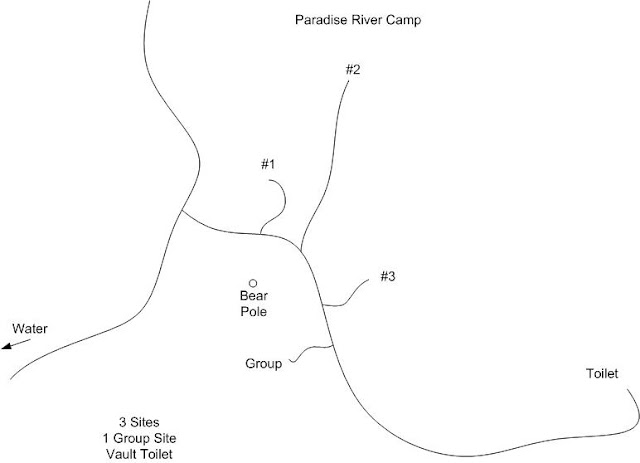 |
| Andesite Columns |
Between Maple Creek Campground and Sylvia Falls, the trail follows the Steven's Creek bottom. The creek meanders along a valley between 10 and 300 feet wide, continually scouring new channels each year with the spring runoff. Shortly upstream of Maple Creek Campground, Steven's Creek looked to be making a new channel through a forested area.
Along this section of the hike, we passed what looked to be an old Lava Flow on the left. This cliff is comprised of andesite columns, made from hardening of lava flows from the mountain's past. What I found interesting about this cliff is that the lava flow at the bottom is coming in at a 60 degree angle to the flow straight up, indicating that eruption chamber was not altogether vertical.
Several times on the trail it crossed into the creek bottom, making it less like a trail and more like scrambling over boulders. Large talus fields on the left pointed to the gradual decomposition of the andesite columns, which would then be eroded into football sized rocks. This was the sunniest part of the trail, however, the cloud cover kept the temperature down.
 |
| Sylvia Falls |
After about 1.3 miles (2km), the trail passes back into the woods and next to Sylvia Falls. According to
Northwest Waterfall Survey, these falls were named by a park ranger William Stafford after a female acquaintance. I can only imagine that he took a fancy to her.
We stopped to rest in this peaceful setting. It's not the largest waterfall by any means, but it is the first one we saw on the trail. There's nothing like the first one.








































